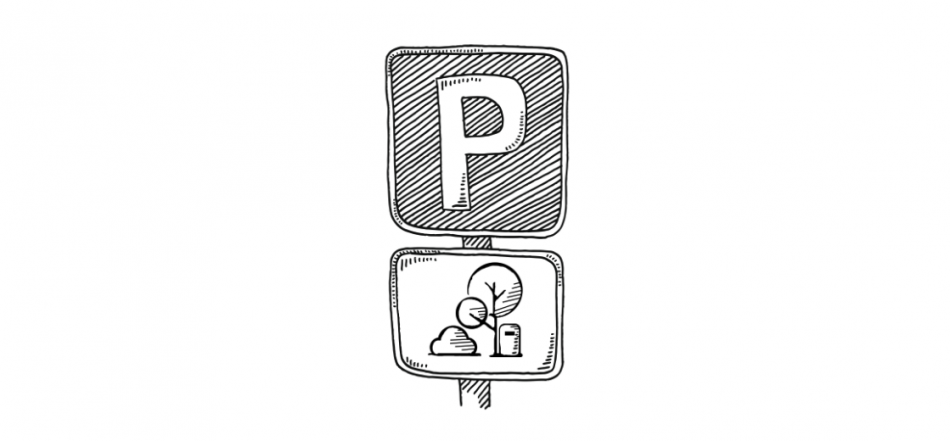A few years ago, pop-ups were known as a source of frustration. As internet nuisances designed to spring ads on you, they inevitably led to calculations for the easiest exit with the fewest clicks. No one wanted to stay in a pop-up.
But now, it wouldn’t be uncommon to spend a few hours in a pop-up. Tiny, and often temporary, spaces are borrowing the hyphen to create pop-up bars, museums, magazines, and food banks. Local governments have also embraced the pop-up trend as a way to introduce new parks.
Pop-up parks are an innovative reinvention of space that used to seem static, and thus can take many shapes. Some are transformed parking lots that offer community programming like yoga and children’s performances for a day or two. Others, sometimes known as “parklets,” are converted parking spaces that have seating, partnerships with local shops and restaurants for food deals, and installation art. Some pop-ups are centered around activities, like a mini skate park that Oakland had for a day, and others raise money for causes, like Honolulu’s Friends of the Library book sale.
Cities across the country have been jumping on the trend for a variety of reasons. Pop-up parks are generally cheap to install and can create greenspaces in cramped urban areas that otherwise lack places to sit outside (and as a bonus, pop-ups often occupy parking spaces or lots and encourage people to leave their cars at home). Business owners are eager to partner with local governments to install pop-ups that they hope will create neighborhood focal points that draw in foot traffic and revitalize shopping districts. Cities have also used temporary spaces to provide outdoor programming to children and families who don’t live near permanent parks.
Not all of these pop-ups are government created or sponsored. Since 2005, people across the country have also been taking the design and creation of pop-up parks into their own hands for one day in September, through an event known globally as Park(ing) Day. The event, which encourages people to rent parking spots for a few hours and convert them into public greenspace, started in San Francisco with a patch of grass and a bench, but has since evolved to include creative interpretations like a ping-pong tournament installation in Los Angeles and a succulent garden in Madrid.
Some cities have developed fuller parklet programs, as a way to convert the renegade activities of Park(ing) Day into long term agreements with the city that bring public greenspaces to congested urban areas that otherwise lack parks. Because of these programs, some cities now have parklets numbering in the thirties and forties, with a steady stream of new applications; on one block in San Francisco alone, there are now four permanent parklets. The parklet program manager, working out of the San Francisco Planning Department, noted that parklets open up a new line of public-private partnership opportunities for cities. Pop-ups allow community members and local governments to work together in developing and piloting new spaces that suit community needs—and they allow for constant revision as they get built, taken down, and rebuilt into the best possible version of a public space for a particular neighborhood.
Pop-ups aren’t limited to big cities, either. Some of the central draws to pop-up parks are the ease of installation, the relatively low cost, and the egalitarian structure that lets government, businesses, and individual citizens work together. Towns with as few as 8,000 people, including places like Doylestown, PA and Burlington, WA, have seen the value in encouraging community participation through pop-ups. The Parks and Recreation Director of Burlington noted that their pop-up program was motivated largely by desire to increase equity of access to parks, especially amongst children who might live far from a permanent park—by taking their parks mobile, the parks and recreation department was better able to meet their community where they’re at.
And like any impactful aspect of urban planning, of course there is a Parks and Recreation episode about pop-up parks. Fans of the show might remember the episode where Leslie Knope designs a grand opening for Indiana’s smallest park on a 0.000003-square-mile patch of concrete. It was written for comedy, but Leslie Knope may have just been an early adopter of the pavement to parks movement. She, and all the cities across the country embracing the pop-up trend, are taking a creative approach to urban greenspaces, and in doing so, proving that with a touch of imagination, anywhere can be a park.
Interested in designing a pop-up park or creating a parklets program in your city?
- Bison Innovative Products, a landscape design firm, has a guide takes you through site selection, a sample permitting process, installation examples, layout design, and material suggestions for pop-up parks.
- The City of Cleveland produced a report on their pilot pop-up park, and it even includes their original spreadsheets that give details on the planning timeline.
- The National Association of City Transportation Officials has an urban street design guide for creating parklets.
- San Francisco has a parklet manual that teaches ordinary citizens how to create or sponsor the transformation of a parking spot to a park (also available in infographic form).
- Participate in Park(ing) Day on September 21, 2019, an annual global event that encourages citizens to turn metered parking spaces into parklets for a few hours.
